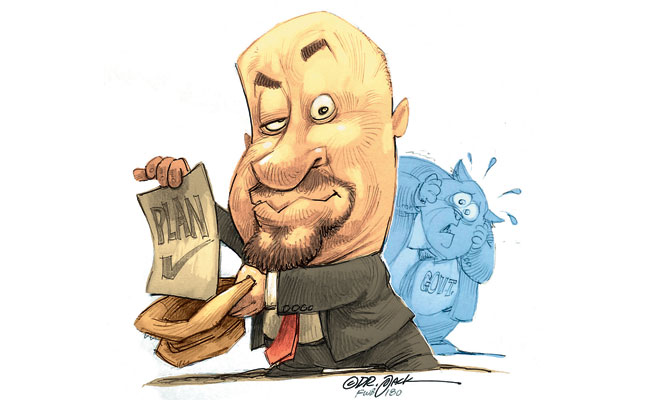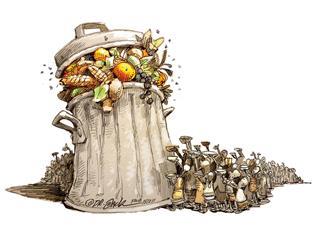
If government really wanted to establish black commercial farmers, the following describes what it would do.
Together with my colleagues, who deal with agriculture and land reform, I did some sums around livestock farming.
READ Make more money with your livestock
We estimate that good-quality grazing land can be bought for R10 000/ha. To purchase a 1 000ha farm for a young, upcoming farmer would cost R10 million. We further estimate that to stock that farm with 200 in-calf cows would cost about R4 million.
A further R2,5 million would then be needed to provide the farmer with a new bakkie, tractor, trailer and implements. He or she could then be given R3,5 million in cash as working capital.
The whole investment would come to R20 million, and would create a debt-free commercial farmer, generating a positive cash flow of about R1 million/year and with more than sufficient collateral to buy more land and expand his/her farming enterprise.
Surely this is the ideal that the advocates and champions of land reform in South Africa should be aspiring to?
Government is talking nonsense
But government policy is not to do this. The policy of the government is to confiscate land from successful producers and lease it to emerging producers, who have no collateral and no capital.
READ AFASA and DAFF must work together to help black farmers
The reason for this approach, the government says, is that “the willing buyer, willing seller model has failed” as there is not enough money to make it work.
This, we can show, is nonsense.
Current budget allocations are misdirected
We took the example of South African Airways (SAA), which received a bailout of R10 billion from government last year, and has just asked for another R5 billion.
Based on our sums above, that amount, had it been spent on land reform, could have established 750 successful new black commercial farmers over the past two years.
Considering that there are only about 30 000 commercial farmers in the country, this is not an inconsiderable number. Moreover, a 10% cut in government’s wage bill would finance the establishment of an estimated 3 000 new black commercial farmers every year. And yet government is starving emerging black farmers of support.
My colleague, Terence Corrigan, writes:
“This year the budget of the Department of Rural Development and Land Reform is some
R10,4 billion. This amounts to less than 1% of government’s total budgeted spending. The
budget for land reform comes in at R2,7 billion.”
The budget for restitution, which involves the settling of land claims, is R3,7 billion. In each case, the amount includes administration costs, and not just the funds dedicated to actual land transfers.
By contrast, government VIP protection and associated services, such as the South African
Air Force 21 Squadron, can expect to cost a total of around R2,6 billion.
In other words, protecting the country’s political elite is seen as on par with providing land to emerging farmers, and not much less important than addressing cases of land dispossession.
This, I believe, tells us just about everything we need to know about government’s
priorities and where the establishment of black farmers fits into the picture.
‘Willing buyer, willing seller’ cannot be said to have failed when there is no buyer.
Position black farmers for success
Each of the new farmers established under our model would be very well positioned to grow their businesses through their own collateral and cash flow, particularly if the Land Bank would grant them generous loan conditions, which is something it does not do currently.
READ ‘Land reform: SA needs to learn from other African examples’
These new black farmers would arguably be in a much stronger financial position than most white commercial farmers. Their rise, eminence, success and expansion would be the most powerful answer South Africa could offer to the historical denial of property rights to black people.
Our model is simple, straightforward and cost-effective, and could be put into action within weeks. But it only works if property rights are respected, and the agriculture sector is run as a market economy.
Why is this model not the policy of government?
The answer most likely relates to ideology around state control of property, disdain for white farmers, and a fear of the political power that would be exercised by a new class of truly successful black rural property owners. Until this changes, we will not see much in the way of successful land reform.
The views expressed in our weekly opinion piece do not necessarily reflect those of Farmer’s Weekly.
Phone Frans Cronje on 011 482 7221, or email him at [email protected].











